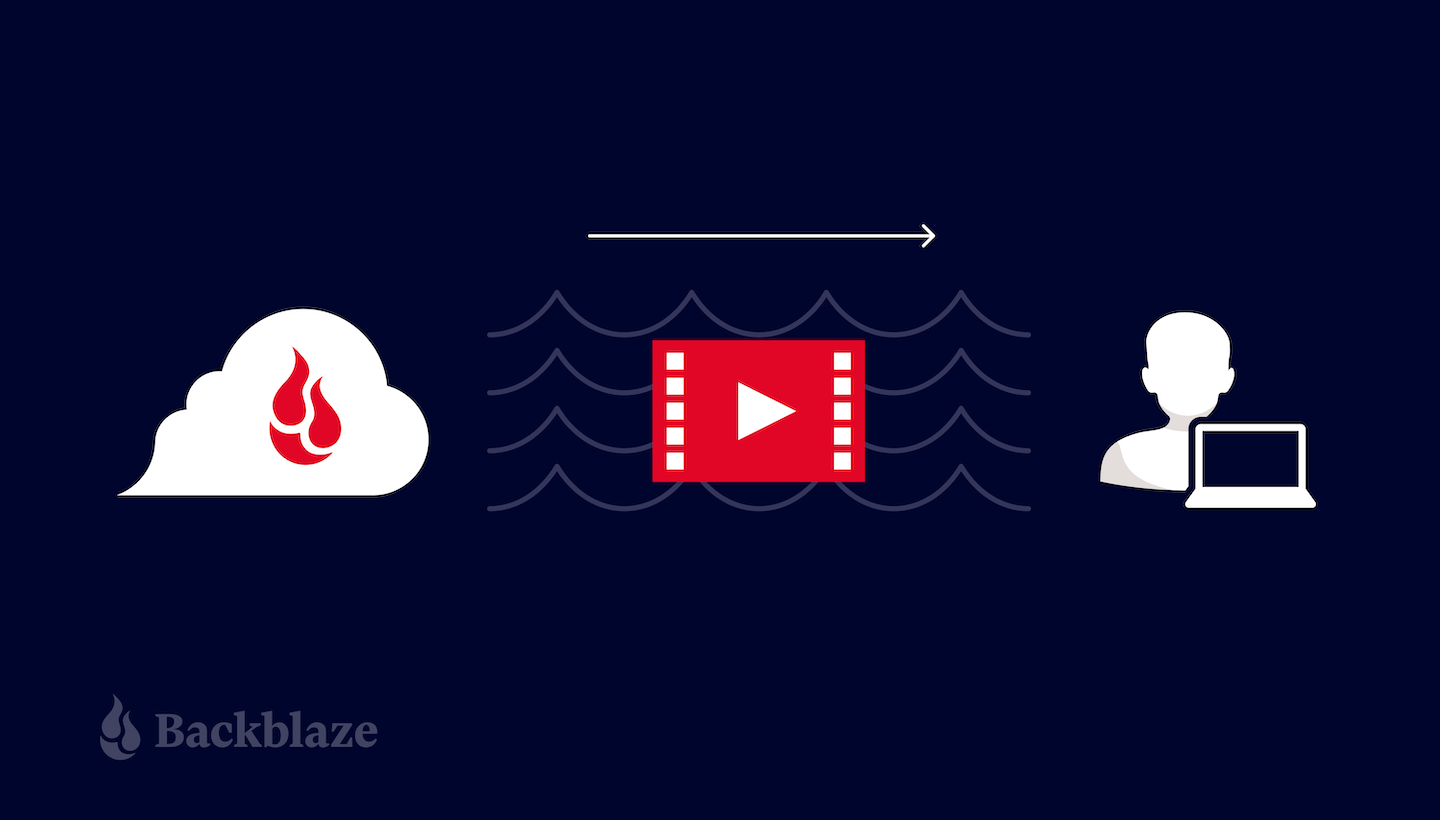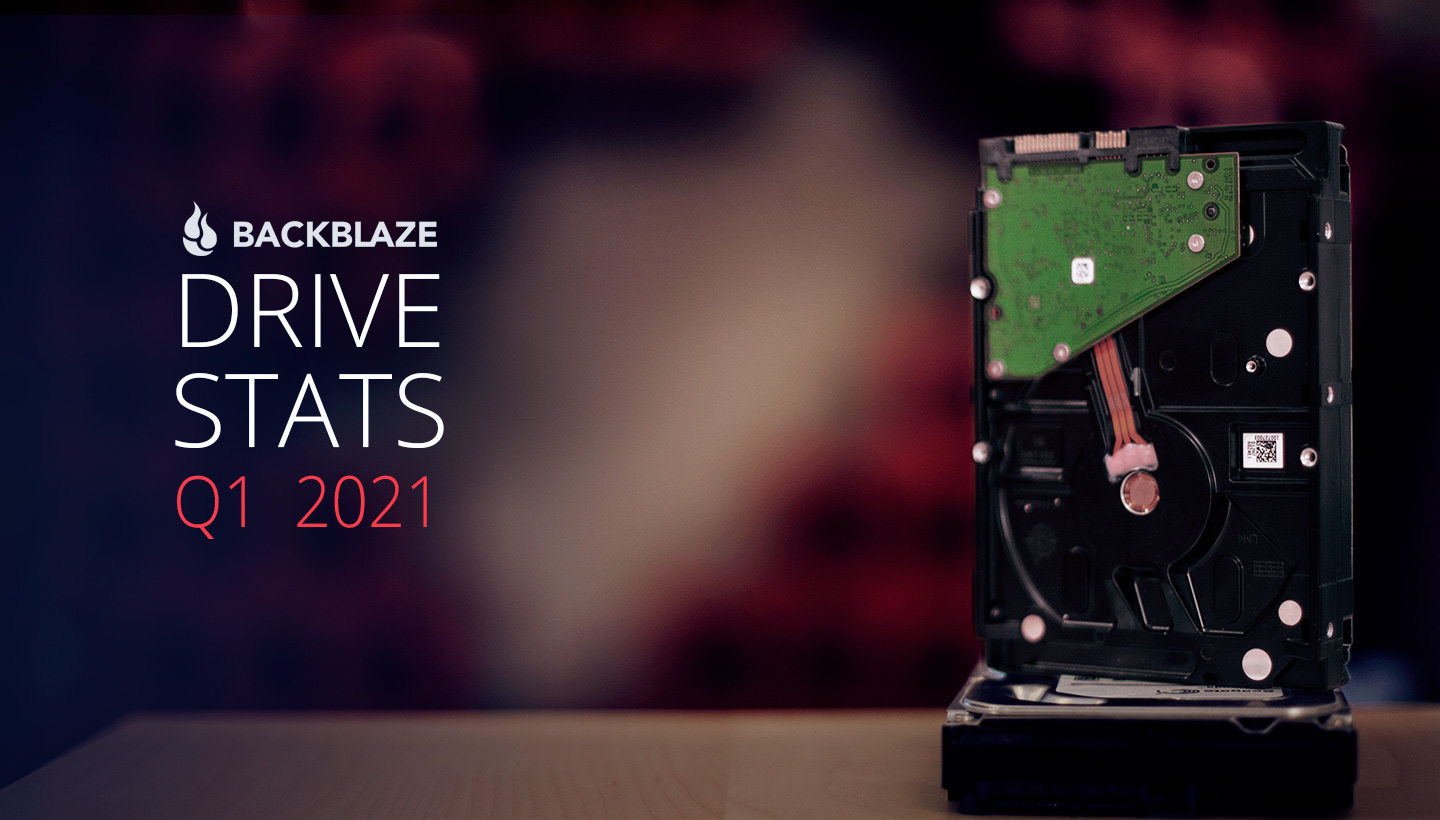
As of March 31, 2021, Backblaze had 175,443 drives spread across four data centers on two continents. Of that number, there were 3,187 boot drives and 172,256 data drives. The boot drives consisted of 1,669 hard drives and 1,518 SSDs. This report will review the quarterly and lifetime failure rates for our data drives, and we’ll compare the failure rates of our HDD and SSD boot drives. Along the way, we’ll share our observations and insights of the data presented, and as always we look forward to your comments below.
2021 Q1 Hard Drive Failure Rates
At the end of March 2021, Backblaze was monitoring 172,256 hard drives used to store data. For our evaluation, we removed from consideration 337 drives which were used for either testing purposes or were drive models for which we did not have at least 60 drives. This leaves us with 171,919 hard drives for the Q1 2021 quarterly report, as shown below.

Notes and Observations on the Q1 2021 Stats
The data for all of the drives in our data centers, including the 173 drives not included in the list above, is available for download on the Hard Drive Test Data webpage. Uncompressed, there is a little over 68GB of data in 2,900 plus CSV files.
For those of you who reviewed our 2020 annual report, you may notice that the 18TB Seagate drives (model: ST18000NM000J) are not included in this report. This drive model was a customer development unit provided to us for testing purposes and as such should not have been included in the 2020 report tables, as we exclude test drives. This quarter we have correctly categorized that drive model as part our testing cohort and as such that model was not included in this report. Customer development units are mechanically complete, but the firmware is considered non-production and as such the drives are considered test drives.
Four drive models recorded zero failures during Q1. Two of these models, the Seagate 6TB and the Toshiba 4TB, have an average age of nearly six years, and lifetime annualized failure rates of less than 1%—very impressive over their lifetime. The other two models with zero failures, the Toshiba 16TB and the WDC 16TB, have an average age of 4.1 months and 0.4 months, respectively. For these models, having zero failures is a great start and we’ll see how they perform over time. Two other drive models, the Seagate 16TB and the Toshiba 14TB, get honorable mentions as they had only one failure during the quarter. Given both drives are recent additions to our farm, we’ll continue to keep an eye on them as well.
The overall annualized failure rate (AFR) of 0.85% for the quarter is the fourth consecutive quarter where the AFR was below 1%, a trend we are very pleased with, especially as we’ve added over 42,000 new hard drives to our farm and migrated another 23,600 drives over the period.
HDDs Versus SSDs, A First Look
At Backblaze, we use SSD drives in several places, but we currently do not use them for storing customer data—that remains in the realm of hard disk drives. But one place we have both HDDs and SSDs is as boot drives for our storage servers. In our case, describing these drives as boot drives is a misnomer as this cohort is also used to store log files for system access, diagnostics, and more. In other words, these boot drives are regularly reading, writing, and deleting files in addition to their named function of booting a server at startup.
A little over two years ago, Backblaze started using SSDs as boot drives. It was about that time we could start getting SSDs that were 200GB or so for less than $50 each, which was our price point for the 500GB hard drives we were buying.
What we have are two groups of drives, one HDDs and the other SSDs, which have performed the same functions in the same environment over time. The table below compares the failure rates in aggregate for Q1 2021 of our HDD and SSD boot drives.
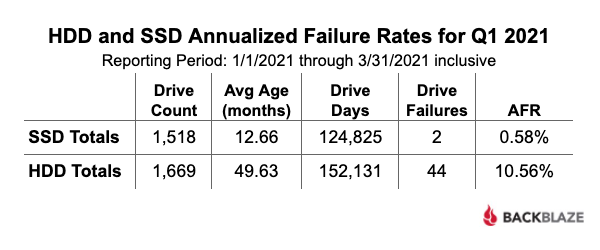
Why didn’t we break these out by model? None of the models by themselves had enough drive days to be statistically relevant. In aggregate, the number of drive days is still on the lower side, but the obvious difference in the AFR between the HDD and SSD boot drives is eye-opening.
If we look at the lifetime results for the HDD and SSD boot drives, the difference in AFR is less, but still significant.
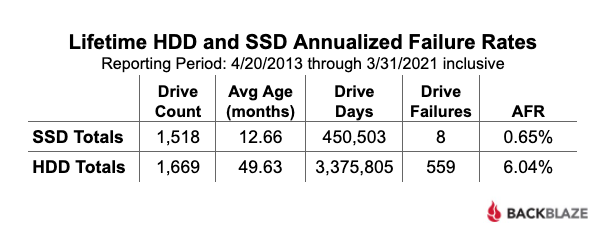
SSD Reporting Moving Forward
One obvious takeaway from these tables is that SSD drives fail less often than HDD drives, at least in this use case. But that ignores one important factor, drive age. If we focus on the age of each of the cohorts, there are potential cracks in our “SSD drives are better” supposition.
- The average age of the SSD drives is 12.7 months, and the average age of the HDD drives is 49.6 months.
- The oldest SSD drives are about 30 months old and the youngest HDD drives are 24 months old.
- The oldest HDD drives are nearly 96 months old—eight years old.
Basically, the timelines for the age of the SSD and HDD drives don’t overlap very much and in general, drive failure rates typically increase as drive population ages. These two considerations make the conclusion that SSDs fail less often than HDD drives not as clear cut as it first seems. Over the coming months, we’ll dig into the data and align the SSD and HDD timelines to examine the HDD drives in their early years of use and we’ll publish those results. This will give us better insight into the failure rate profile over time for the HDD drives.
In addition to the boot drives, we also utilize SSD drives for different use cases, for example on restore servers and so on. Over time, our goal is to instrument these drives as well without impacting performance, so we can build a library of SSD drive failure rates by use case.
Lifetime Hard Drive Stats
The chart below shows the lifetime annualized failure rates of all of the hard drive models in production as of March 31, 2021.
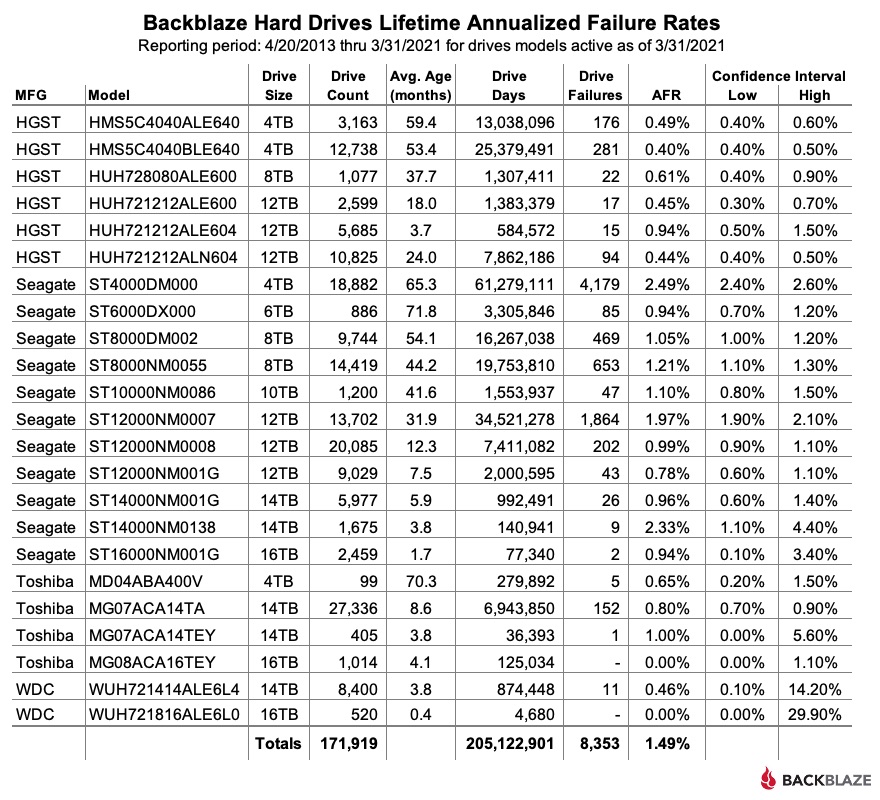
Notes and Observations on the Lifetime Stats
The lifetime AFR for all of the drives in our farm continues to decrease. The 1.49% AFR is the lowest recorded value since we started back in 2013. The drive population spans drive models from 4TB to 16TB and varies in average age from two weeks (WDC 16TB) to nearly six years (Seagate 6TB).
Our best performing drive models in our environment by drive size are listed in the table below.
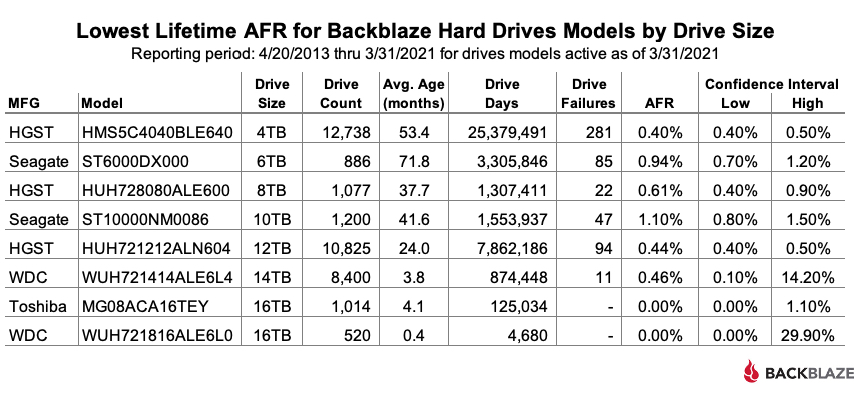
The average age and drive days for the 14TB and 16TB drives are not sufficient enough to come to any conclusions, but the remaining drives have proven their worth over time in our environment.
Another way to look at this data is by grouping all the drives of a given size: 4TB, 6TB, etc. We’ve done that in the table below.
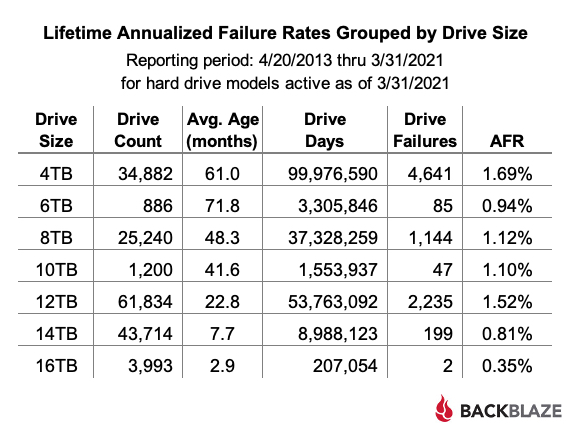
The Hard Drive Stats Data
The complete data set used to create the information used in this review is available on our Hard Drive Test Data page. You can download and use this data for free for your own purpose. All we ask are three things: 1) you cite Backblaze as the source if you use the data, 2) you accept that you are solely responsible for how you use the data, and 3) you do not sell this data to anyone; it is free.
If you just want the summarized data used to create the tables and charts in this blog post you can download the ZIP file containing the CSV files for each chart.
Good luck and let us know if you find anything interesting.
Learn More About Drive Stats
Join Drive Stats author Andy Klein as he goes beyond the numbers to discuss why he thinks the failure rates have gone down over time, what are some of the challenges using the latest big drives, what does he think about our SSD numbers, and more. Sign up today for the Backblaze Drive Stats Q1 2021 webinar on the Backblaze BrightTALK channel.
About Backblaze
If you’re not familiar with Backblaze, we’ve been in the storage cloud business for over 14 years. We keep things simple: Backblaze Computer Backup for your home or office PC or Mac, and Backblaze B2 Cloud Storage for your servers and all the other data you need to protect off-site. We’re inexpensive, easy to use, and we know what we’re doing.




